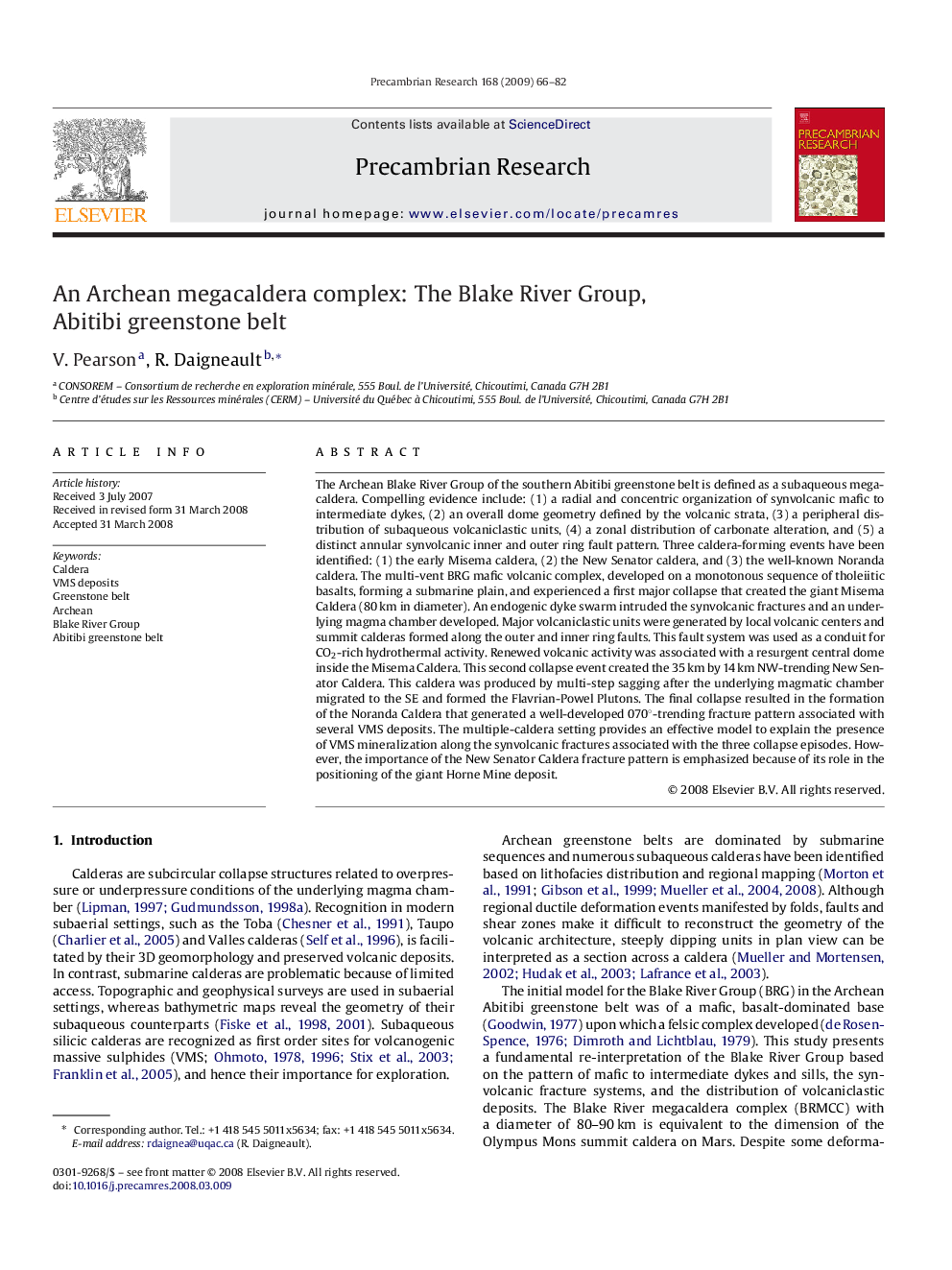| کد مقاله | کد نشریه | سال انتشار | مقاله انگلیسی | نسخه تمام متن |
|---|---|---|---|---|
| 4724118 | 1639695 | 2009 | 17 صفحه PDF | دانلود رایگان |

The Archean Blake River Group of the southern Abitibi greenstone belt is defined as a subaqueous megacaldera. Compelling evidence include: (1) a radial and concentric organization of synvolcanic mafic to intermediate dykes, (2) an overall dome geometry defined by the volcanic strata, (3) a peripheral distribution of subaqueous volcaniclastic units, (4) a zonal distribution of carbonate alteration, and (5) a distinct annular synvolcanic inner and outer ring fault pattern. Three caldera-forming events have been identified: (1) the early Misema caldera, (2) the New Senator caldera, and (3) the well-known Noranda caldera. The multi-vent BRG mafic volcanic complex, developed on a monotonous sequence of tholeiitic basalts, forming a submarine plain, and experienced a first major collapse that created the giant Misema Caldera (80 km in diameter). An endogenic dyke swarm intruded the synvolcanic fractures and an underlying magma chamber developed. Major volcaniclastic units were generated by local volcanic centers and summit calderas formed along the outer and inner ring faults. This fault system was used as a conduit for CO2-rich hydrothermal activity. Renewed volcanic activity was associated with a resurgent central dome inside the Misema Caldera. This second collapse event created the 35 km by 14 km NW-trending New Senator Caldera. This caldera was produced by multi-step sagging after the underlying magmatic chamber migrated to the SE and formed the Flavrian-Powel Plutons. The final collapse resulted in the formation of the Noranda Caldera that generated a well-developed 070°-trending fracture pattern associated with several VMS deposits. The multiple-caldera setting provides an effective model to explain the presence of VMS mineralization along the synvolcanic fractures associated with the three collapse episodes. However, the importance of the New Senator Caldera fracture pattern is emphasized because of its role in the positioning of the giant Horne Mine deposit.
Journal: Precambrian Research - Volume 168, Issues 1–2, January 2009, Pages 66–82